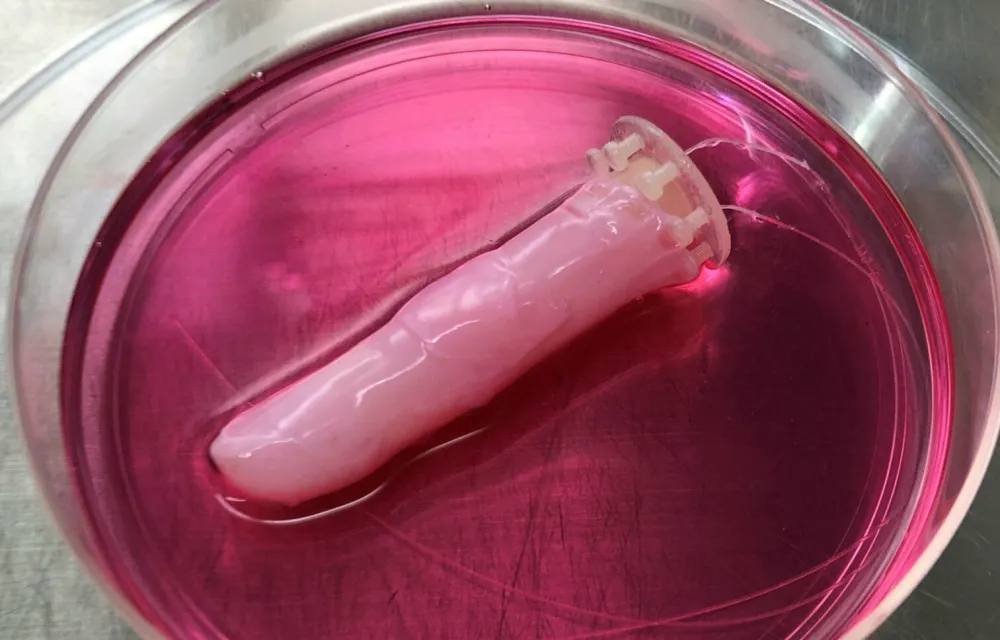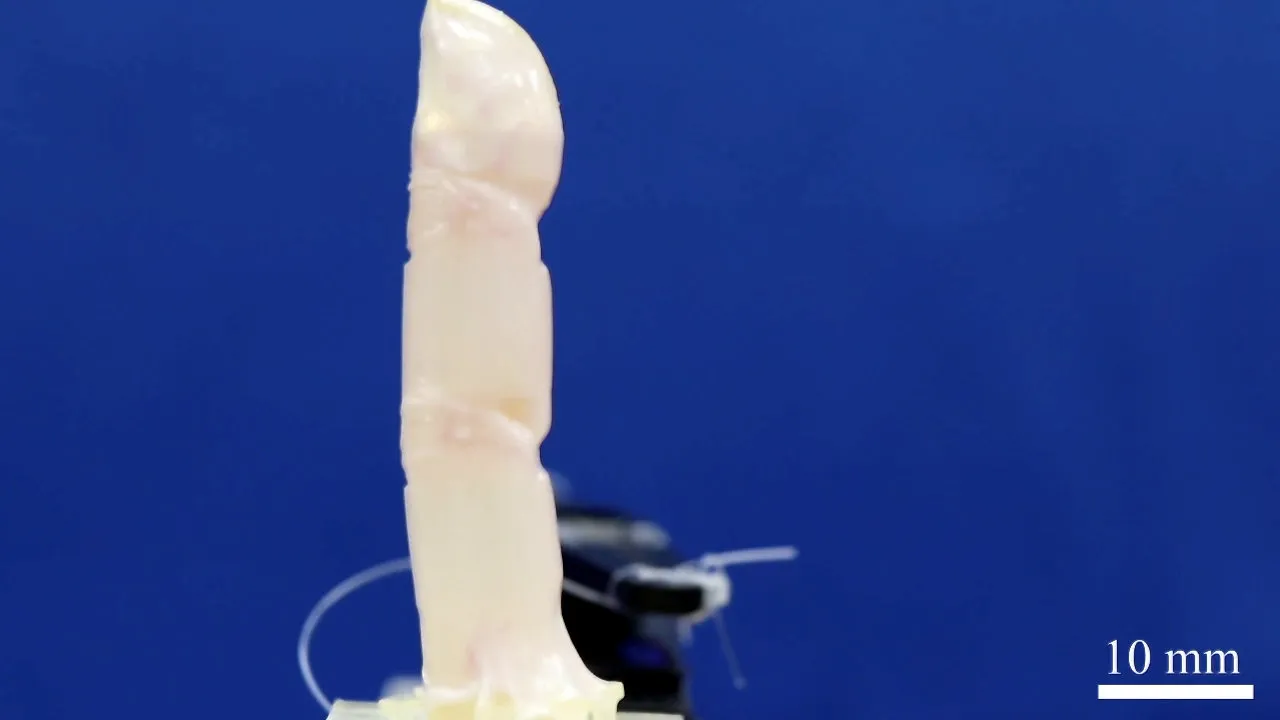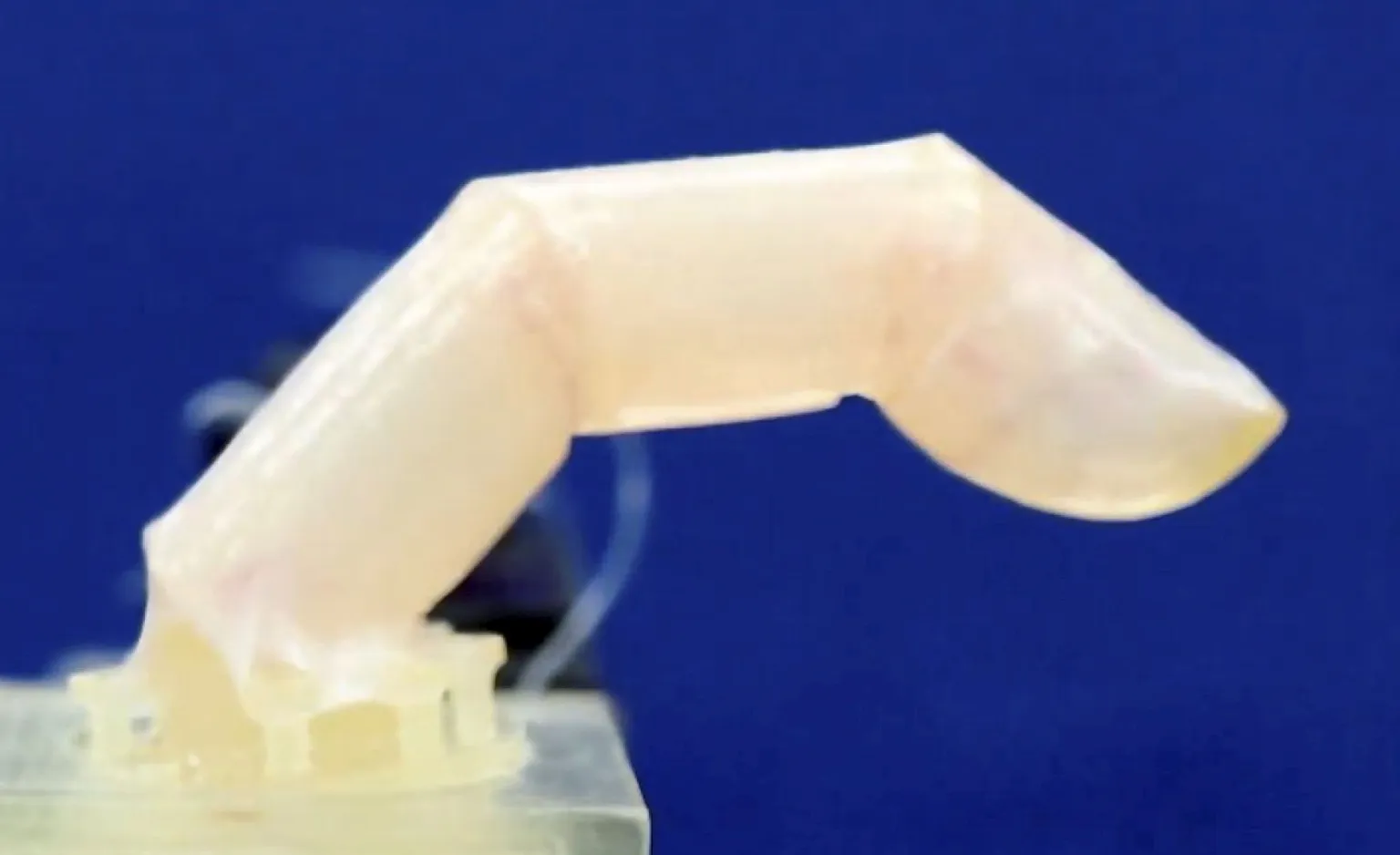 By Study Finds
By Study Finds
Is it a human or a robot? It may sound like a question from a sci-fi movie, but scientists in Japan have developed a way of covering robots with living, human cells!
A team from the University of Tokyo are bringing androids one major step closer to reality by crafting actual skin for their frames. The method not only gave a robotic finger skin-like texture, but also water-repellent and self-healing functions.
“The finger looks slightly ‘sweaty’ straight out of the culture medium,” says study first author Professor Shoji Takeuchi says in a media release. “Since the finger is driven by an electric motor, it is also interesting to hear the clicking sounds of the motor in harmony with a finger that looks just like a real one.”
Looking like a “real” human is one of the top goals for designers of humanoid robots, especially those which interact with humans in healthcare and service industries. Prof. Takeuchi believes a human-like appearance can improve the efficiency on communication between robots and people and also improve their likeability among customers.

The main advantage of growing skin on the finger directly is that it’s always going to be a perfect fit so can allow the device to bend easily. If the skin was cut from a flat sheet and adhered to the finger, the imperfect shapes and seams would interfere with the movement. (Credit: Takeuchi et al.)
Improving on current robot coverings
Although silicone skin, which robot makers currently use, can mimic human appearance, the researcher explains that it “falls short” when it comes to recreating delicate textures — like wrinkles. They also lack skin-specific functions, according to Takeuchi.
Previous attempts at creating living skin to cover robots have only had limited success. Part of the problem has been getting it to conform to the dynamic shapes of the human body, which have uneven surfaces.
“With that method, you have to have the hands of a skilled artisan who can cut and tailor the skin sheets,” says Takeuchi. “To efficiently cover surfaces with skin cells, we established a tissue molding method to directly mold skin tissue around the robot, which resulted in a seamless skin coverage on a robotic finger.”
To craft this new skin, the Tokyo team dipped the robotic finger in a solution of collagen and human dermal fibroblasts. These are the two main components that make up human skin’s connective tissues. Prof. Takeuchi says the study’s success lies within the natural shrinking tendency of the collagen and fibroblast mixture. During the experiment, the skin shrank and tightly conformed to the frame of the finger.
Pinching and stretching just like the real thing
Just like paint primers, the mix provided a uniform coating for the next coat of cells to sit on top of. In this case, that next layer consisted of human epidermal keratinocytes. The cells make up 90 percent of the outermost layer of human skin. For the robot, it gave the finger a skin-like texture and a moisture-retaining barrier.
Prof. Takeuchi notes that the robot’s skin has enough strength and elasticity to survive specific movements such as curling or stretching the finger. The outermost layer was thick enough for researchers to pinch it using tweezers. It was also capable of repelling water, providing various advantages in performing specific tasks.
When something damages the skin, researchers say the skin can even self-heal, just like humans, with the help of a collagen bandage that gradually morphs into skin and withstands repeated joint movements.
“We are surprised by how well the skin tissue conforms to the robot’s surface,” says Takeuchi. “But this work is just the first step toward creating robots covered with living skin.”
However, study authors note the skin is much weaker than natural skin and can’t survive long without constant nutrient supplements and waste removal.
Top image caption: In the culture medium a robotic finger covered with human living skin self heals after researchers covered its wound with a collagen sheet (Credit: Shoji Takeuchi)
Become a Patron!
Or support us at SubscribeStar
Donate cryptocurrency HERE
Subscribe to Activist Post for truth, peace, and freedom news. Follow us on SoMee, Telegram, HIVE, Flote, Minds, MeWe, Twitter, Gab, What Really Happened and GETTR.
Provide, Protect and Profit from what’s coming! Get a free issue of Counter Markets today.


Be the first to comment on "Robotic Flesh? Scientists Create Living Skin for Covering Robots"